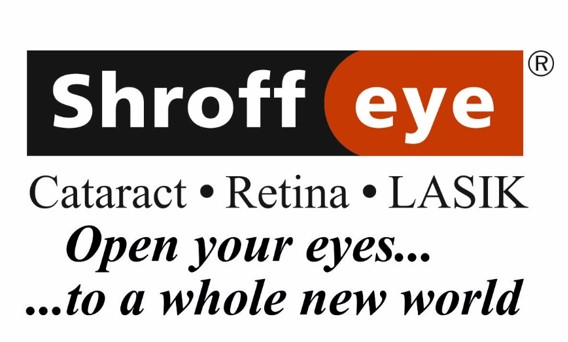Shroff Eye Hospital is India's First Eye Hospital accredited by the Joint Commission International (USA) since 2006. Shroff Eye is also India's first and only Wavelight Concerto 500 Hz LASIK center. Shroff Eye has stood for excellence in eye care since 1919. A firm commitment to quality is at the heart of all services provided at our centers at Bandra(W) and Marine Drive, Mumbai.
A cataract occurs when there is a clouding of the natural lens inside your eye.
True. Because this lens works just like the lens of a camera, a clouded lens will keep light and images from reaching the retina, which sends images to your brain. This is the reason that a cataract causes sharp images to become blurry, bright colors to become dull, and seeing at night more difficult. Once your natural lens becomes clouded, the only treatment available to improve your sight is to remove the natural lens and replace it with an artificial lens.
The most frequent cause of cataracts is the natural aging process.
True. However, cataracts may also form as a result of eye trauma or a chronic medical condition (e.g., diabetes).
Cataracts can be treated by diet or medications.
False. Although many eye conditions can be improved upon, or their progression slowed, by a person’s diet, there are no medications or diets that will reduce the effects of a cataract.
It is best to have cataract surgery as soon as a cataract is detected in your eye.
False. It is time to have cataract surgery when your normal lifestyle – reading the morning paper, completing work tasks, driving to the grocery store or seeing the expression on the face of a loved one is jeopardized by impaired vision. The right time is different for each patient. If your normal lifestyle is not substantially impaired, resist any pressure to schedule cataract surgery. Remember that is in a surgical procedure that should be elected only when you believe that your quality of life is substantially compromised.
Cataract surgery can be performed using only topical anesthesia – i.e., eye drops to numb the eye.
True. Depending on your unique vision needs and conditions, pain relief can be achieved through the application of topical eye drops without the need for more intensive anesthesia. By using a topical anesthetic, the risks of cataract surgery are considerably reduced. Topical anesthesia eliminates potential complications such as perforation of the eye, hemorrhage, or damage to the optic nerve associated with using a needle. In addition, it eliminates the surgical risks common to the administration of anesthesia.
An artificial lens made of plastic is usually inserted at the same time a cataract is removed.
True. Intraocular lenses were first introduced in 1949 and are available today in all kinds of shapes, sizes and lens materials. In the 1990s, foldable lenses were introduced, quickly becoming the most popular lens implants in the world because of their ability to provide excellent visual results
There is one standard lens that is used for all cataract patients.
False. Lens implants come in different materials and in different “powers” and sizes. In order to receive the full benefits of cataract surgery, your surgeon must calculate the correct lens to use for your unique eye conditions. This requires extensive pre-operative measurements performed by a variety of state-of-the-art diagnostic instruments. Cataract surgery must be customized to each patient – it is not a “one size fits all” procedure.
Cataract surgery requires that a large incision be made in the eye to extract the lens and replace it.
False. Advances in “phacoemulsification” technologies permit your surgeon to extract the natural lens in small pieces, thereby avoiding the need for a large incision for extraction. In addition, the newest foldable artificial lens implants require a small incision for implantation. The result is that only a very small incision is required for cataract surgery, as long as your surgeon is trained in the latest cataract surgery technologies.
After cataract surgery, you will need to wear glasses to see up-close.
True and False! The most common type of lens implant is called a “monofocal” lens implant. This lens will provide you with clear, crisp vision at one point of distance. At other points of vision – particularly at near vision – the lens will not function as perfectly, thereby requiring most cataract patients to wear reading glasses for close-up vision.
The FDA has approved the “multifocal” lens. These lenses provide good “walk around” vision, reducing the need for glasses for close-up tasks. Choosing the correct multifocal lens – to deliver the very best vision outcome possible – requires substantial pre-operative testing and post-operative follow-up.
Cataract patients who have had previous eye surgery such as LASIK require special attention.
True. LASIK patients require special attention when it comes to calculating the optimal power of the lens that is implanted. A surgeon who does not take into account the effects of LASIK or other vision correction surgeries will not select a lens implant that maximizes the vision improvement resulting from cataract surgery.
The best cataract surgeon is one who only performs cataract surgery.
False. The ideal surgeon is one who is extremely experienced in cataract surgery, is up-to-date on the latest surgical innovations, and is equally experienced in vision correction (for those who have had previous vision correction surgery) and the diagnosis and treatment of other eye conditions such as glaucoma. In this way, your eye surgeon can treat any confounding eye conditions that could compromise the benefits you will enjoy from cataract surgery. Moreover, because the cornea is a critical factor in calculating the optimal intraocular lens for each patient, a cornea-trained surgeon is better equipped to achieve the best vision outcome possible.






